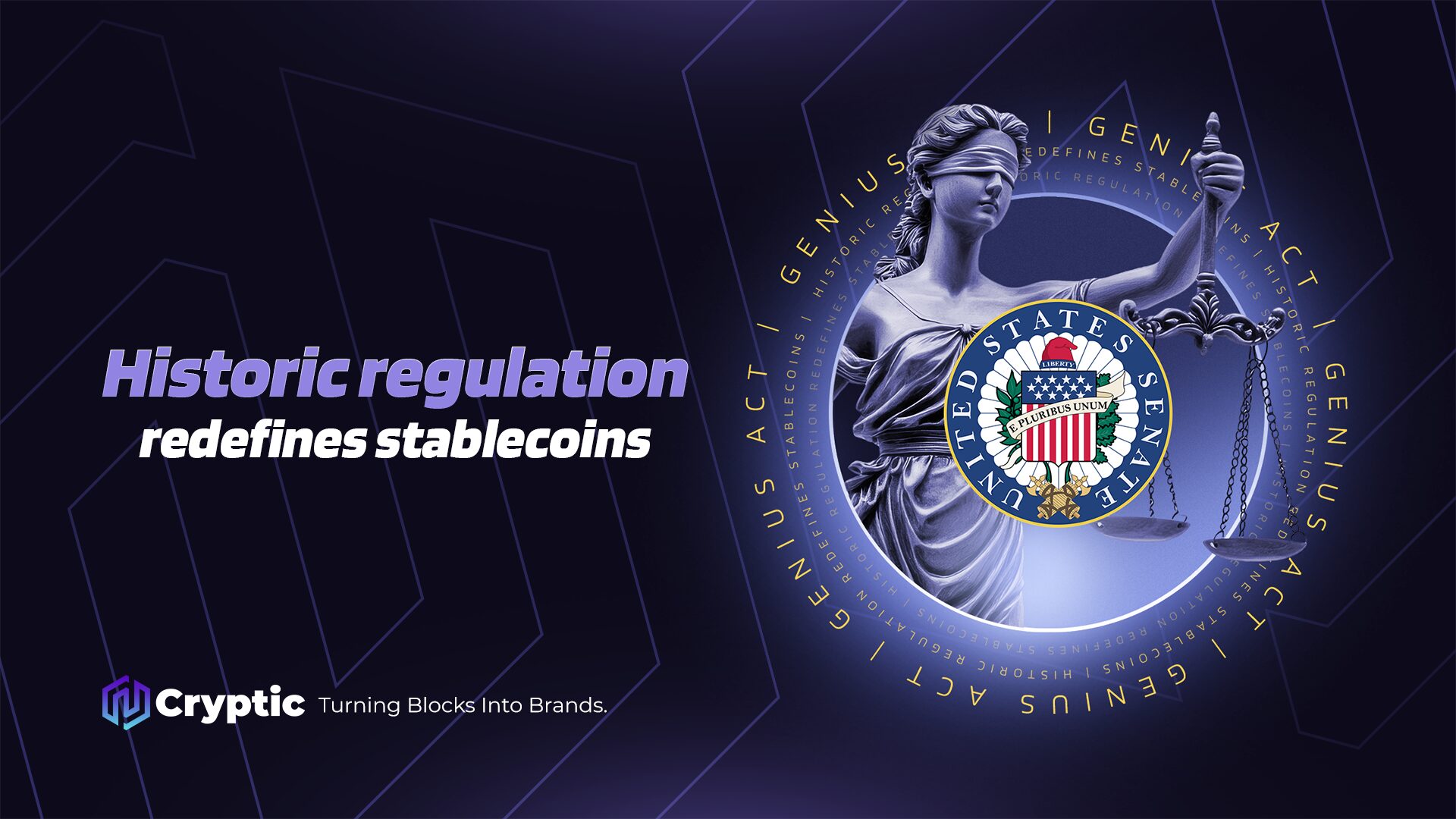With rare bipartisan support, the US takes a decisive step to lead global digital finance through the GENIUS Act.

The recent cloture vote approval for the GENIUS Act in the United States Senate represents a significant advancement in the country’s stablecoin regulation process. With 66 votes in favor, the move signals a rare bipartisan consensus around the need to establish a clear legal framework for fiat-backed digital assets. The bill proposes specific guidelines for the issuance, custody, and supervision of stablecoins, differentiating between bank and non-bank issuers, and requiring liquid reserves and regular audits. Senators such as Cynthia Lummis emphasize that the proposal is essential to protect the financial system without stifling innovation. For the market, this progress is historic as it provides a concrete response to the legal uncertainty that has limited institutional expansion in the sector for years.
On the global stage, the American move occurs amid a regulatory race. Jurisdictions like the European Union with MiCA, the United Kingdom, Japan, and Singapore have been structuring normative frameworks to attract capital and innovation in digital assets. The United States, traditionally a leader in international financial governance, now seeks to regain leadership in the digital realm. The GENIUS Act by proposing transparent and predictable rules strengthens the dollar’s position in the stablecoin ecosystem and represents a strategic step for the US to consolidate its influence in the architecture of global digital finance.
What is the GENIUS Act and why does it matter?
The GENIUS Act establishes stringent guidelines for the issuance of stablecoins in the US. The bill requires these assets to be fully backed by dollars or equivalent liquid assets such as short-term Treasury securities. The proposal aims to ensure that stablecoins’ value is always protected by solid reserves.
For issuers with a market value above $50 billion, the bill mandates mandatory and regular audits. It also includes specific rules for foreign issuers wishing to operate in the country, demanding compliance with US standards. Furthermore, there are provisions aimed at consumer protection and conflict of interest prevention.
Despite initial resistance from part of the Democratic side, the GENIUS Act advanced with bipartisan support after intense negotiations. Concessions such as increased oversight by the Federal Reserve were decisive in securing consensus. This movement reflects growing pressure for the US to assume a leading role in digital asset regulation.
Why this moment is historic
The moment is considered historic by several senators including Bill Hagerty and Cynthia Lummis who highlighted the legislative advance as a singular achievement. This episode shows a rare demonstration of bipartisan cooperation on an emerging issue reflecting recognition of the importance of financial digitization for the country’s future. Industry mobilization was also significant with around 60,000 emails sent to the Senate before the vote demonstrating private sector engagement in shaping this regulation.
The expected impacts go beyond simple regulation aiming to protect investors, boost technological innovation, and stimulate demand for Treasury securities. This initiative repositions the United States at the forefront of the digital financial market creating a safer and more favorable environment for sustainable financial development. It is a milestone that strengthens confidence in the system and promotes significant advances in integrating technology into both public and private sectors.
The global regulatory chessboard: what is at stake
With the growing global adoption of cryptoassets, the regulatory chessboard is intensifying among major financial centers such as the European Union through MiCA, the United Kingdom, Hong Kong, and other markets that have already established or are advancing regulatory frameworks for cryptoassets and stablecoins. In this scenario, the United States faces the challenge of reclaiming its leadership in digital innovation threatened by the progress of these jurisdictions and the GENIUS Act emerges as a strategic response to reaffirm its leadership. Additionally, the proposed regulation has the potential to consolidate the dominance of the dollar in the digital environment as dollar-backed stablecoins already represent a significant portion of the crypto market reinforcing American geopolitical influence by supporting this hegemony under a solid and trustworthy institutional framework.
Challenges and next steps
The bill still faces important challenges in the legislative process as it needs to go through amendments and a new vote in the Senate before advancing. Moreover, it depends on negotiations with the House of Representatives which has its own text, the STABLE Act, requiring harmonization between the different proposals to enable effective and comprehensive legislation.
Politically, the bill’s advancement encounters resistance including criticisms from senators such as Elizabeth Warren who point to alleged ethical loopholes in the text involving figures like Donald Trump. Discussions are also underway regarding the possibility of merging the stablecoin bill with the market structure bill adding complexity to the negotiations. Thus, despite significant progress, the legislative path remains challenging and subject to important adjustments.
What this advance signals for the future
This legislative progress indicates that the United States is finally willing to build a regulatory environment that fosters technological innovation while maintaining the necessary legal certainty to protect the market and investors. By establishing clear and consistent rules, the country demonstrates its commitment to creating a robust regulatory framework that keeps pace with the rapid evolution of the digital financial sector.
Stablecoin regulation represents a fundamental step toward consolidating a dollarized digital economy bringing greater transparency and credibility to transactions involving these digital assets. This movement may strengthen confidence in stablecoin use boosting adoption both domestically and internationally and creating conditions for a safer and more efficient financial infrastructure.
Finally, the world is closely watching this process as the project’s success or failure could define the direction of the next phase of global finance. By taking the lead in digital asset regulation, the United States reinforces its economic and technological influence and sets an international standard that may influence policies and practices in other jurisdictions shaping the future of the global financial market.



